The Digestive System
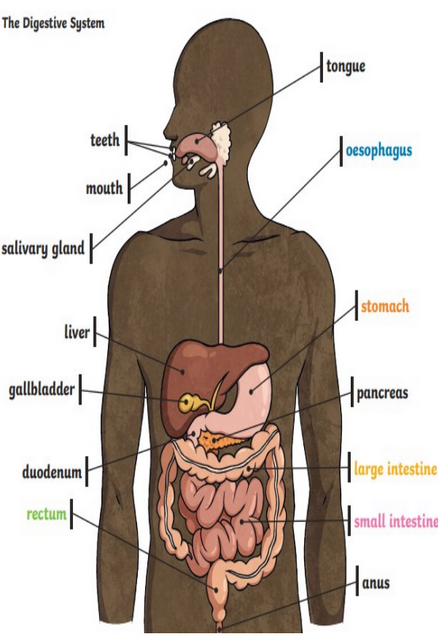
- The smell of food triggers saliva to be produced.
- The digestive system begins with the mouth and teeth where food is chewed.
- Saliva is mixed with the food which helps to break it up.
- When the food is small enough to be swallowed, it is pushed down the oesophagus by muscles to the stomach.
- In the stomach, food is mixed further.
- The mixed food is then sent to the small intestine which absorbs nutrients from the food.
- Any leftover broken down food then moves on to the large intestine.
- The food minus the nutrients arrives in the rectum where muscles turn it into faeces. It is stored here until it is pushed out by the anus. This is called excretion.
Terrific Teeth
What is the role of our teeth?
- Teeth are used for cutting and chewing food.
- They start the digestive process which gives us the energy we need to live.
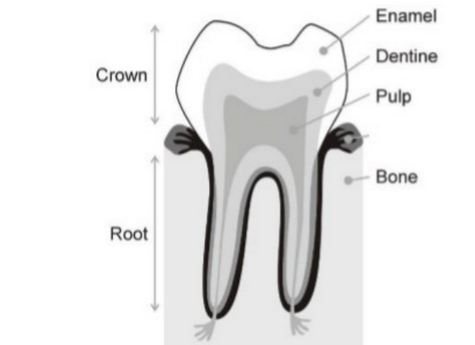
What are the different names and functions of our teeth?
- Canines are pointed for tearing and ripping food – these are usually used when chewing meat.
- Incisors are shovel shaped and help bite lumps out of and cut food.
- Premolars and molars are flat and they grind and crush food.
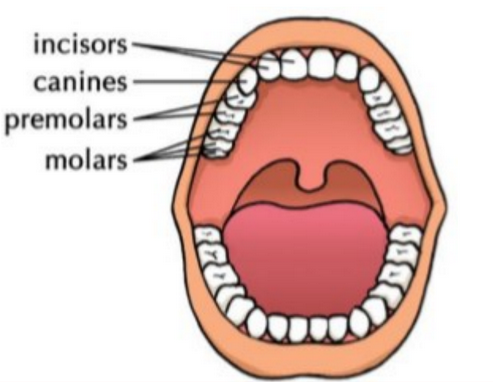
How do we look after them?
- Humans look after their teeth by brushing and flossing and ensuring that they do not eat foods high in sugar.
- Not looking after teeth can lead to an increase in plaque and tooth decay.
Teeth in animals other than humans
The teeth of an animal are designed to eat different foods depending on the diet of the animal. Examples of the types of teeth of a herbivore, a carnivore and an omnivore are below:
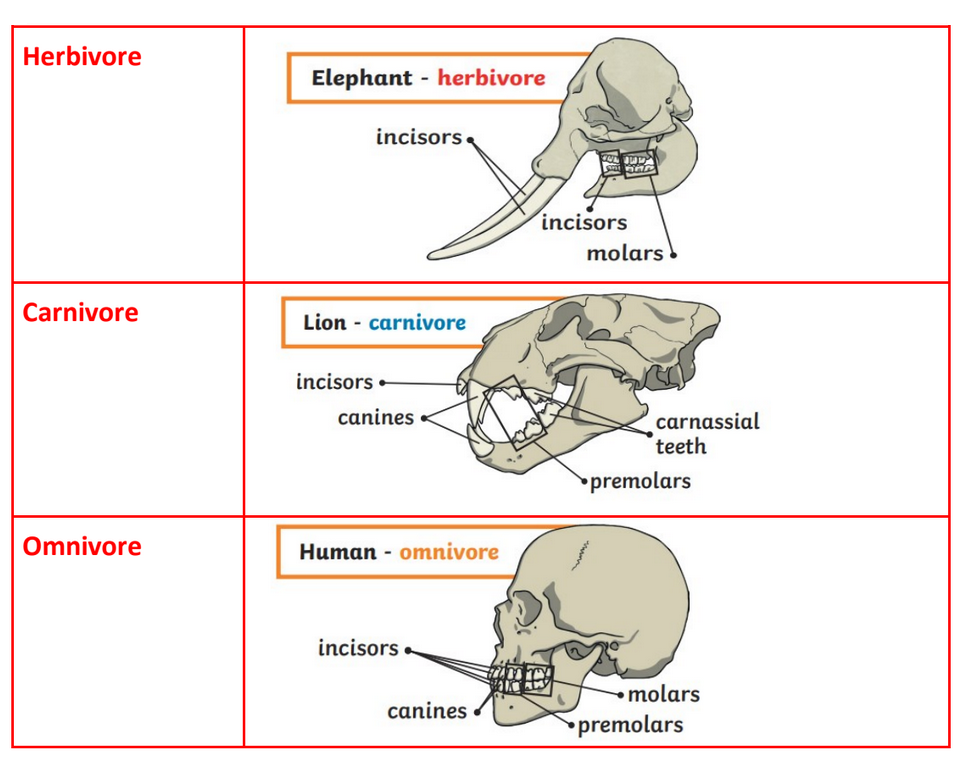
Food Chains
Food chains are the connections between producers, prey and predators. All the living things in a food chain rely on each other. A food chain describes how different organisms eat each other, starting out with a plant and ending with an animal.

Focus Scientist
Ivan Pavlov (1849-1936) worked to unveil the secrets of the digestive system, but he also studied what signals triggered phenomena, such as the secretion of saliva through his famous Pavlov’s dog experiments.
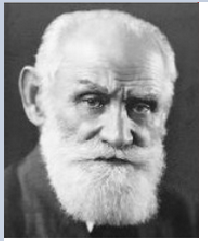
Key Vocabulary
canine: pointed teeth near the front of the mouth in humans and some animals.
carnivore: an animal that eats meat.
decay: natural process of slowly losing health or strength.
digestion: the breaking down of food that is eaten.
enamel: The hard white substance that forms the outer layer of the tooth.
excretion: Process of getting rid of faeces, urine or sweat through the body.
faeces: the solid waste substance that people and animals get rid of from their body by passing it through the anus.
food chain: the order in which living things depend on each other for food.
incisor: the teeth at the front of your mouth which you use for biting into food.
intestines: the tubes in your body through which food passes when it has left your stomach.
molar: the large, flat teeth towards the back of your mouth that you use for chewing food.
nutrition: the process of taking food into the body and absorbing the nutrients in those foods.
oesophagus: the part of your body that carries the food from the throat to the stomach.
omnivore: person or animal that eats both meat and plants.
predator an animal that hunts, catches and eats other living things.
prey An animal that is hunted, caught and eaten by other living things.
producer a plant that produces its own food.
rectum part of the digestive system where stools are stored before leaving the body through the anus.
saliva the watery liquid that forms in your mouth and helps you to chew and digest food.
stomach the organ inside your body where food is digested before it moves into the intestines.
Animals – The Digestive System
Digestion is the how the body breaks down food so it can be taken in and used. There are many organs in the digestive system each with a particular job to do.
Food passes down through:
The Mouth
Oseophagus
Stomach
Small Intestine
Large Intestine
Rectum
Other organs such as the liver and pancreas also play a role in digestion by producing chemicals that help to break down food.
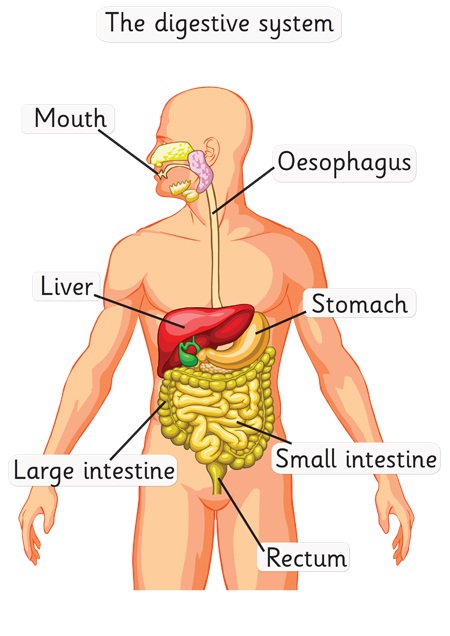
How long is your small intestine?
Nearly as long as a bus (7m).
